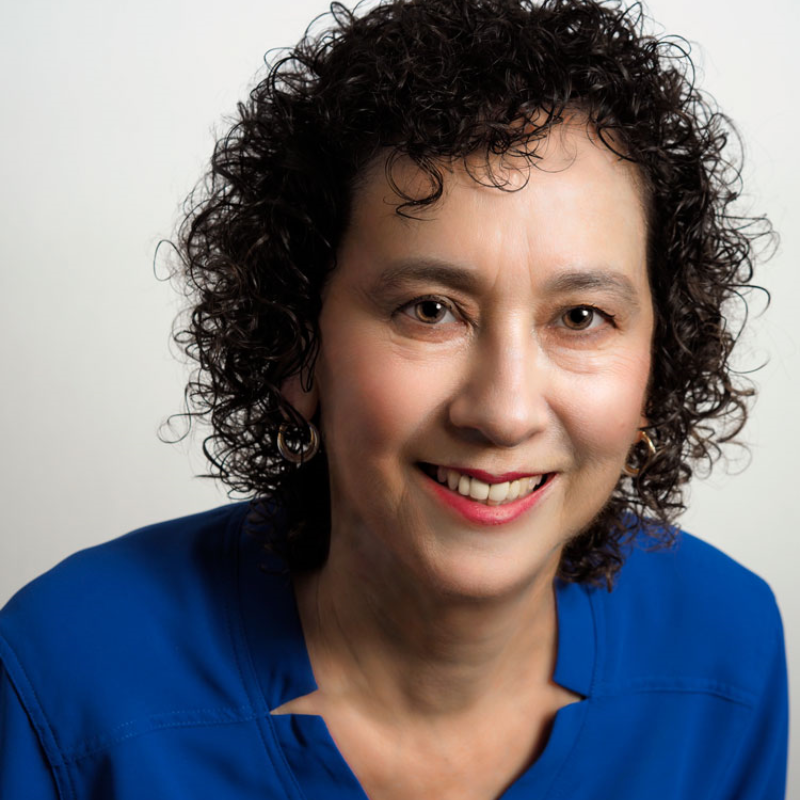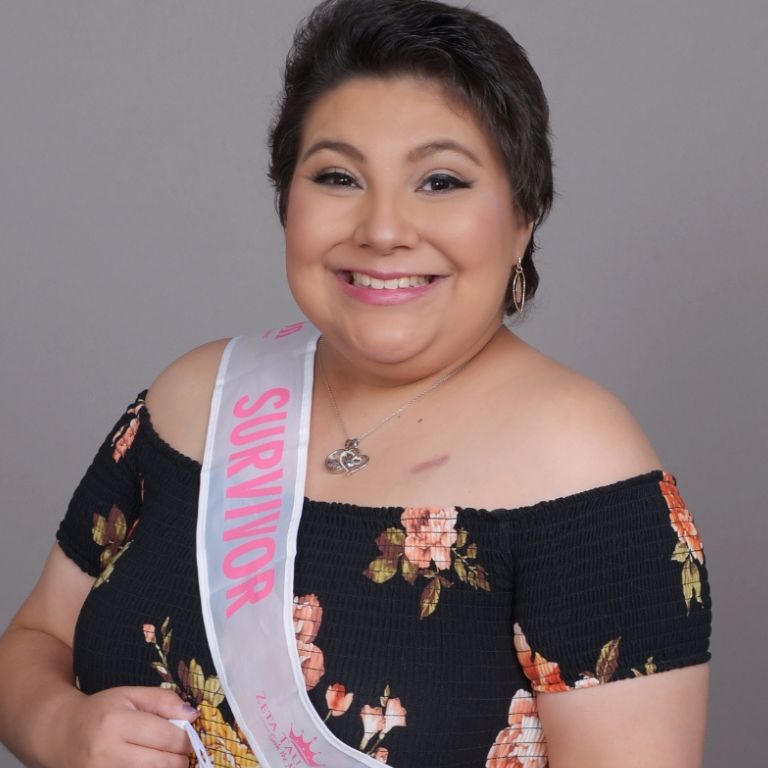For Mom and me: Ashlynn’s advocacy for breast cancer and leptomeningeal disease
- 12/06/23
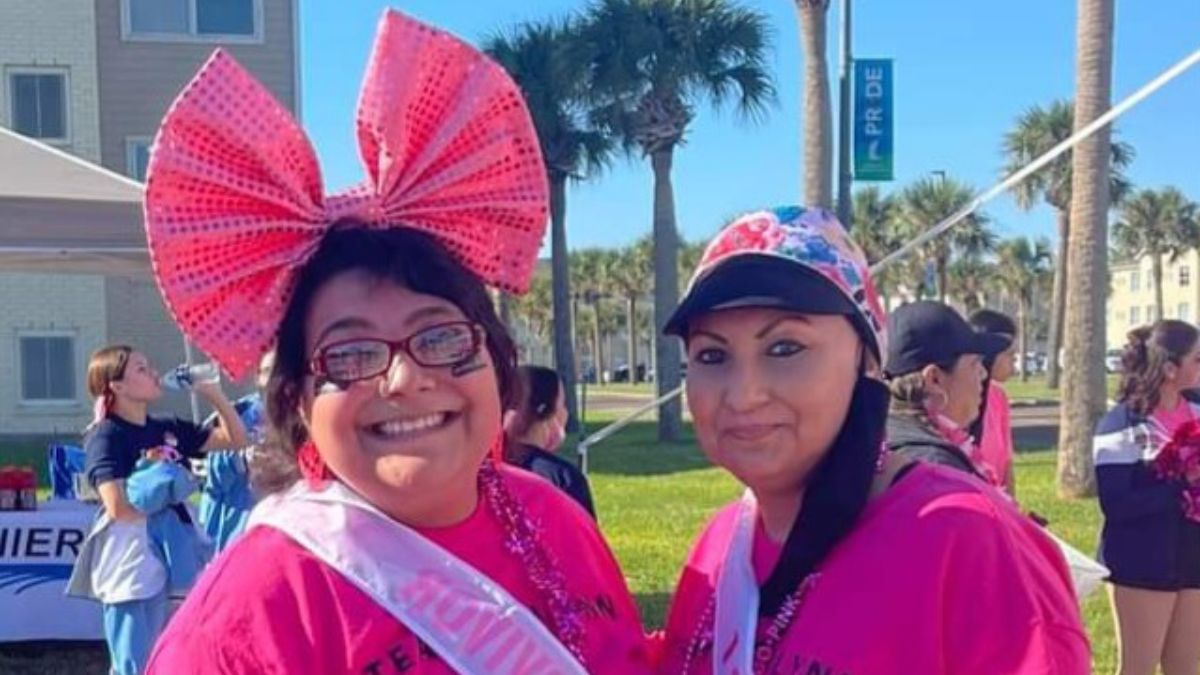
The shock of hearing she had breast cancer at age 23 left Ashlynn Gomez of Corpus Christi, Texas, without words.
She thought a small bump on her breast was a spider bite from working in the garden department at a home center. Both her primary care doctor and a radiologist who read her breast ultrasound thought the bump was a cyst or abscess. Nothing to worry about at her age, they said, but they advised she have a biopsy just to be sure.
Later, the radiologist called and told her that she had breast cancer. “Then he asked, ‘Do you have any questions?’” Ashlynn recalls. “I didn’t know what to say. I just froze. I hung up.”
Soon she began asking questions with more determination to find information, resources, and support for herself. Her path wasn’t smooth. She faced financial, physical, and even cultural constraints. Yet advocating for her own needs strengthened Ashlynn’s ability to get through treatment and beyond. It also gave her a new resolve: to help others who were going through similar experiences.
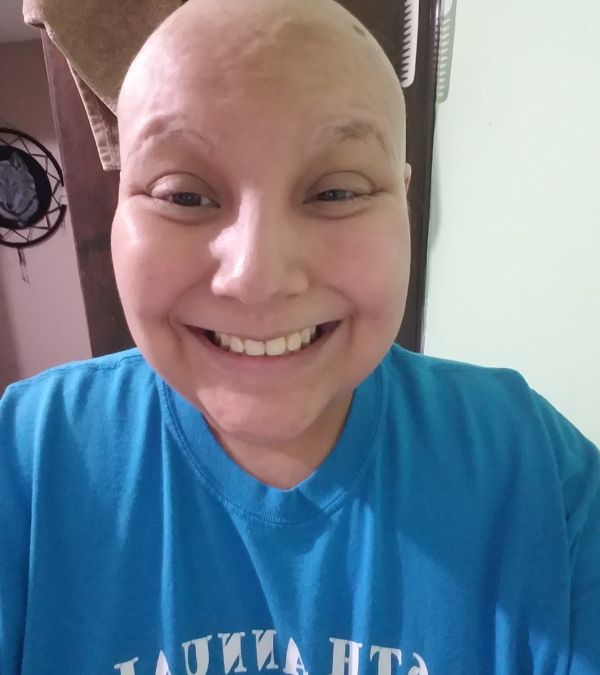
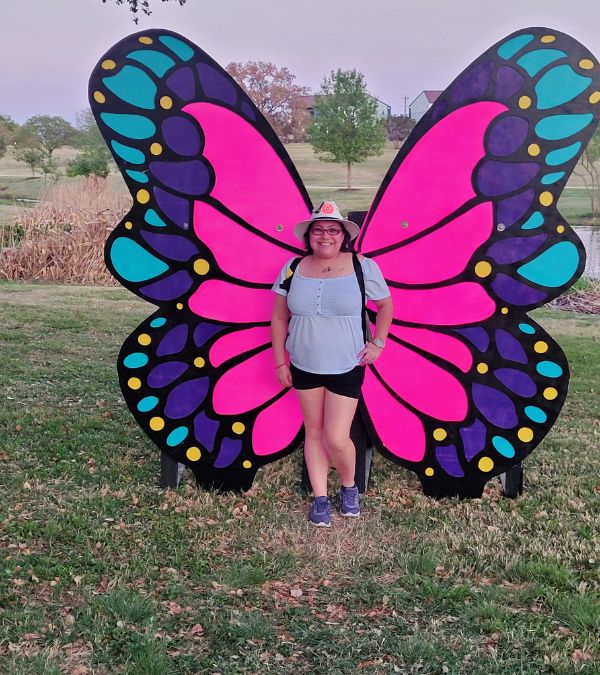
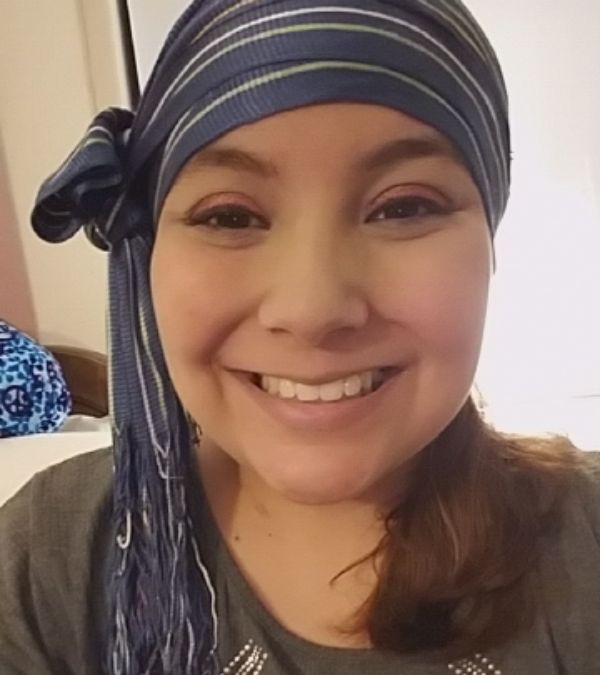
Overcoming hurdles: Navigating insurance and treatment
At the time of her diagnosis in June 2020, Ashlynn was a student, about to start an internship to become a certified medical assistant. She had no health insurance.
Her primary care doctor at a county clinic told her to apply to Medicaid for the Breast and Cervical Cancer Program, which provides treatment for uninsured people (a similar program exists in all states). Her doctor wanted Ashlynn to go to a highly regarded cancer center in Houston, about 235 miles away, because that hospital saw more young breast cancer patients.
It would take time to navigate insurance paperwork and be accepted for treatment in Houston, so she saw a local oncologist as well. Ashlynn says that doctor “didn’t seem knowledgeable” in answering her questions. That convinced her to go to the larger hospital for care.
There were many details to worry about. Ashlynn had to find an insurance company (several administered the Medicaid program) that would approve treatment at the cancer center. When she arranged that, she drove to Houston with her grandmother and mother, met medical staff, had imaging, and underwent tests. She also met with a genetic counselor and learned she had a BRCA1 genetic mutation.
Then she was told Medicaid wouldn’t approve some services, so her insurance wouldn’t pay for them. Her care was put on hold as she tried to get approvals. “We had to come back home because I couldn’t resolve it,” she says. “I told my grandmother I need to fight this battle.”
Ashlynn’s training as a medical assistant helped her work through bureaucratic channels. She was persistent, calling the insurance company every day. “I told them, ‘You need to fix this.’ I came to know everyone who worked in the prior authorization department in Medicaid. I kept asking for the next higher-up person.”
That effort was finally successful. On the day chemotherapy was to start, she learned she had stage III triple-negative breast cancer (TNBC), which can be more aggressive than other breast cancer types. She joined a clinical trial for TNBC patients, to see how an additional drug given before chemotherapy might help.
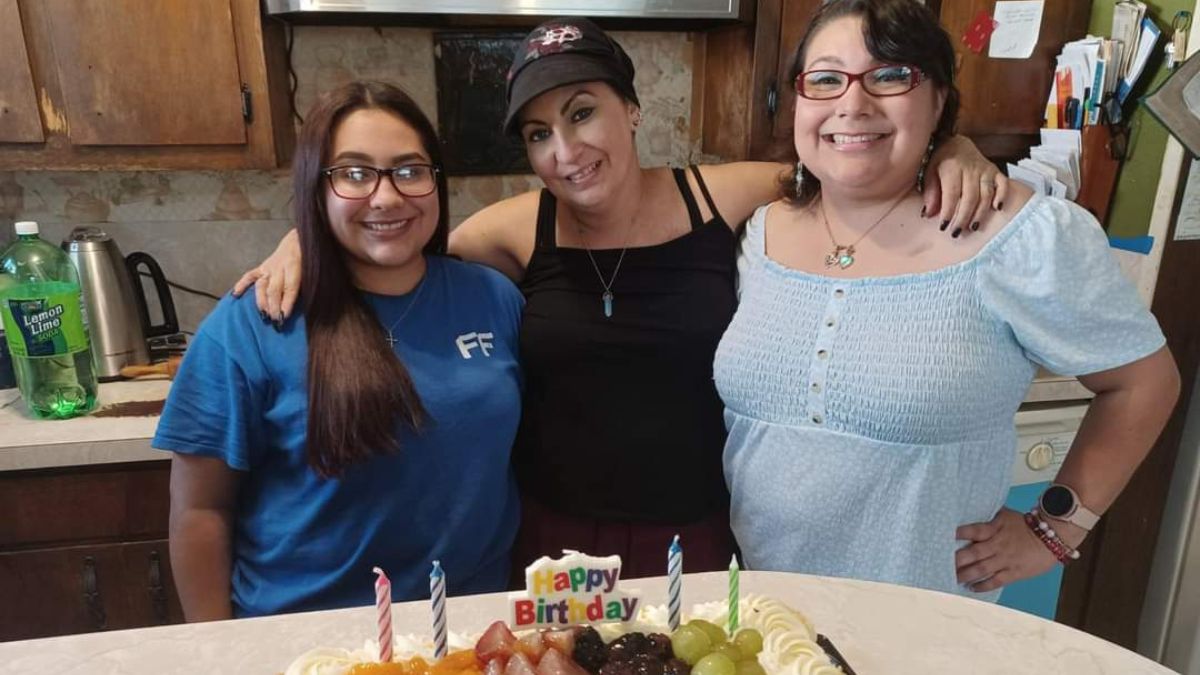
Isolation and cultural stigma: The emotional toll of cancer
To reduce her risk of COVID-19 infection and get help with personal care, Ashlynn moved into her grandparents’ house. Treatment side effects made her ill, limiting her strength and movement. Her body hurt and felt like it was on fire. She had trouble walking, lost her hair and eyebrows, and her bladder became weak. She needed help using the toilet and taking a shower. She was unable to start her internship, go to work, or graduate with her friends.
“I felt like my life was on hold,” she says. “I was at a standstill. While everyone was living their life, I was fighting for mine.”
She also felt isolated by negative reactions from others. “My family has a very traditional Hispanic background,” she says, in which cancer isn’t talked about. As a result, people close to her often didn’t understand how cancer develops or know that all cancers are not the same. Some understood that breast cancer wasn’t her fault but still criticized her for “not being stronger” when dealing with problems from side effects. “I love my family to pieces,’ Ashlynn says, “but I think they didn’t know how severe it was. I couldn’t control my body anymore.”
Some family members implied that she had brought breast cancer on herself by not praying enough, not taking the right vitamins, or not eating the right foods. One relative, referring to an uncle who had died of cancer, said that she was her uncle’s “curse.”
“I didn’t feel like I was okay to talk to everybody,” Ashlynn says. “I couldn’t even tell my family how I was feeling, how low and depressed I was. I felt like some of them wouldn’t understand.”
She also felt stigmatized in public, especially when treatment affected her appearance. While shopping in a store, “a family moved their children away from me. I felt so horrible,” she says.
As she went through treatments, Ashlynn learned she would need more information and assistance than she was given by her medical team. “I had to research for myself and find resources that would help me,” she says. Those resources offered help with finances, transportation, lodging, emotional support, and more.
She found safety in a support group for young adults with cancer, sponsored by the hospital. Being with others like herself, she began to feel more “normal” and focused on a new purpose. “I started to find the inner fire within myself, and I wanted to be an advocate,” she says.

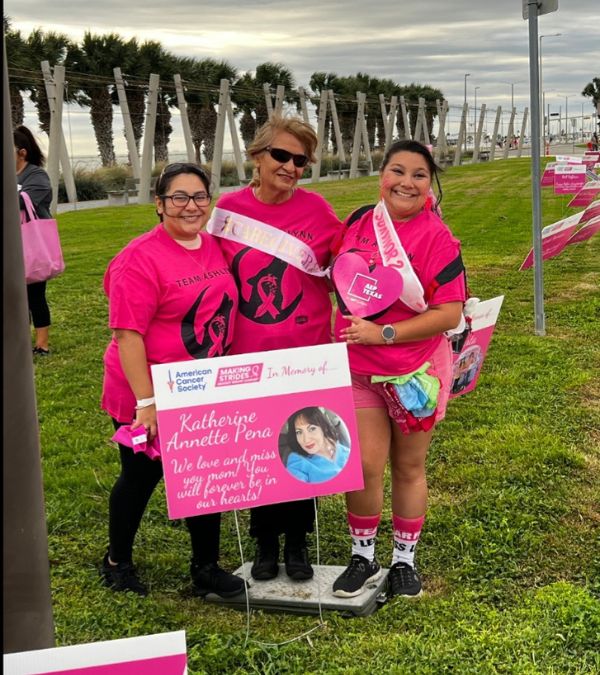
Finding a new purpose in advocacy
When her active treatment finished, Ashlynn went back to medical assistant school and graduated. A month later, in January 2022, she was told she was in remission. On that same day, her mother was diagnosed with breast cancer. She also had a BRCA1 genetic mutation.
Ashlynn went into caregiver mode. “We never really considered ourselves mom and daughter. She was more like my best friend and sister,” she says.
Drawing from her own experiences, Ashlynn helped her mother enroll in the Medicaid breast cancer insurance program and receive treatment from the same medical team at the same hospital. She equipped her with personal care supplies and went with her to Houston for appointments when she could.
Her mother went through breast cancer treatments but began not wanting to move or eat. She had mood changes and started talking as if she was in her childhood, Ashlynn says. She told her mother’s doctors that something was wrong, but it was hard to get them to listen. “I was always fighting,” she says.
After several medical setbacks, doctors said her mother had leptomeningeal disease, a serious and rare cancer complication that happens when cancer cells travel through the cerebrospinal fluid to the spinal cord and brain. Ashlynn got little information about the condition from local medical providers. When her mother fell into a coma, she was flown to Houston by air ambulance. She never recovered and died at age 45.
Since that time, Ashlynn has worked to help others avoid the difficulties she and her mother faced. To build understanding about breast cancer and leptomeningeal disease, she volunteers as a Legislative Ambassador with the American Cancer Society’s Cancer Action Network, and with Living Beyond Breast Cancer (LBBC). She compiled and distributes a list of breast cancer resources and a list of medication cost assistance programs, created with a friend. At age 27, she’s an active graduate of the LBBC Young Advocate program, a medical assistant in a dermatology practice, and studying towards getting a license in social work.
“I made a promise to my mom that I was going to do more to make my voice heard and her voice heard,” she says. “And that’s what I do now, to help other warriors and caregivers have a voice and let them know they are not alone.”
DISCLAIMER:
The views and opinions of our bloggers represent the views and opinions of the bloggers alone and not those of Living Beyond Breast Cancer. Also understand that Living Beyond Breast Cancer does not medically review any information or content contained on, or distributed through, its blog and therefore does not endorse the accuracy or reliability of any such information or content. Through our blog, we merely seek to give individuals creative freedom to tell their stories. It is not a substitute for professional counseling or medical advice.
This article was supported by the Grant or Cooperative Agreement Number 1 U58DP006672, funded by the Centers for Disease Control and Prevention. Its contents are solely the responsibility of the authors and do not necessarily represent the official views of the Centers for Disease Control and Prevention or the Department of Health and Human Services.

